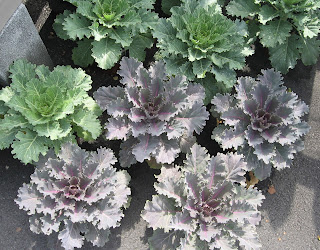Some perennials need division frequently, while others do better left undisturbed. The following list illustrates how often to divide many common perennials. These recommendations assume suitable growing conditions and overall healthy plants. The time frames given for division are those required to maintain plant health. Some of the plants on this list can be invasive under certain conditions and many need division more frequently than indicated if their size must be limited.
Divide These Every 1-3 Years
Achillea (Yarrow)
Aegopodium podagraria ‘Variegatum’ (Snow on the Mountain)
Arabis caucasica (Rock Cress)
Artemisia ludoviciana (Wormwood)
Aster Novi-belgii (New York Aster)
Campanula carpatic (Carpathian Harebell)
Campanula persicifolia (Peach Leaved Bellflower)
Centaurea montana (Bachelor’s Button)
Centranthus ruber (Jupiter’s Beard)
Cerastium tomentosum (Snow in Summer)
Coreopsis grandifolia (Tickseed)
Coreopsis verticillata (Threadleaf Tickseed)
Delphinium elatum (Delphinium)
Dendranthema morifolium (Chrysanthemum)
Dianthus deltoids (Maiden Pinks)
Gaillardia grandiflora (Blanket Flower)
Geum (Avens)
Helenium autumnale (Helen’s Flower)
Heuchera micrantha (Purple-leaved Coral Bells)
Heuchera sanguinea (Coral Bells)
Iris germanica (Bearded Iris)
Leucanthemum superbum (Shasta Daisy)
Lychnis coronaria (Rose Campion)
Monarda didyma (Beebalm)
Penstemon barbatus (Beard Tongue)
Phlox paniculata (Garden)
Phlox subulata (Creeping)
Physostegia virginiana (Obedient Plant)
Veronica spicata (Spiked Speedwell)
Divide These Every 4-5 Years
Acanthus hungaricus (Bear’s Breeches)
Armeria maritima (Sea Thrift)
Astrantia lactiflora (Mugwort)
Asteromoea mongolica (Kalimeris)
Astrantia major (Masterwort)
Astilbe (Astilbe)
Bergenia cordifolia (Bergenia)
Boltonia asteroids (Boltonia)
Campanula glomerata (Clustered Bellflower)
Campanula rotundifolia (Harebell)
Cerstostigma plumbaginoides (Plumbago)
Chelone lyonii (Turtlehead)
Chrysogonum virginianum (Golden Star)
Dianthus gratianopolitanus (Cheddar Pinks)
Dicentra eximia (Fringed Bleeding Heart)
Digitalis grandiflora (Perennial Foxglove)
Erigeron (Fleabane)
Eupatorium maculatum (Joe-Pye Weed)
Helianthus (Perennial Sunflower)
Heliopsis helianthoides (False Sunflower)
Hemerocalllis (Daylily)
Liatris spicata (Gayfeather)
Rudbeckia fulgida ‘Goldsturm’ (Black Eyed Susan)
Rudbeckia nitida ‘Herbstonne’ (Shining Coneflower)
Scabiosa (Pincushion Flower)
Solidago (Goldenrod)
Stachys byzantina (Lamb’s Ear)
Stokesia laevis (Stokes Aster)
Tiarella cordifolia (Foamflower)
Tradescantia andersoniana (Spiderwort)
Veronicastrum virginicum (Culver’s Root)
Divide every 6-10 years
* = resents disturbance
^ = tough woody roots or taproot
Alchimelia mollis (Lady’s Mantle)
Amsonia tabernaemontana * (Blue Star)
Asarum europaeum (European Ginger)
Begonia grandis (Perennial Begonia)
Brunnera macrophylla (Perennial Forget-Me-Not)
Echinacea purpurea (Purple Conflower)
Echinops ritro *^ (Globe Thistle)
Epimedium * (Barrenwort)
Filipendula rubra ‘Venusta’ ^ (Queen of the Prairie)
Filipendula ulmaria ^ (Meadowsweet)
Geranium (Cranesbill)
Hemerocallis (Daylily)
Hosta (Hosta)
Iberis sempervirens * (Candytuft)
Iris siberica (Siberian Iris)
Kniphofia (Red Hot Poker)
Ligularia (Ligularia)
Limonium latifolium * (Sea Lavender Statice)
Nepeta (Catmint)
Papaver orientale * (Oriental Poppy)
Polygonatum odoratum ‘Variegatum’ (Variegated Solomon’s Seal)
Pulmonaria (Lungwort)
Rodgersia aesculifolia (Rodger’s Flower)
Salvia nemerosa (Meadow Sage)
Sedum spectabile (Stonecrop)
Thalictrum aquilegifolium (Meadowrue)
Tricyrtis hirta (Toadlily)
Trollis * (Globeflower)
Ornamental Grasses (variety)
Divide every 10 + years
* = resents disturbance
^ = tough woody roots or taproot
Aconitum * (Monkshood)
Adenophora lilifolia (Ladybells)
Anemone hybrid (Japanese Anemone)
Aquilegia (Columbine)
Aruncus dioicus *^ (Goatsbeard)
Asclepias tuberosa *^ (Butterfly Weed)
Baptisia australis * (False Blue Indigo)
Cimicifuga racemose * (Bugbane)
Dicentra spectabilis (Old Fashioned Bleeding Heart)
Dictamnus albus * (Gas Plant)
Eryngium *^ (Sea Holly)
Euphorbia (Spurge)
Gyspophilia paniculata *^ (Baby’s Breath)
Helleborus (Lenten Rose)
Hibiscus moscheutos (Hibiscus)
Hosta (Hosta)
Paeonia (Peony)
Platycodon grandifloras *^ (Balloon Flower)
Polemonium caeruleum (Jacob’s Ladder)
Thermopsis Caroliniana * (Carolina Lupine)



